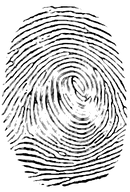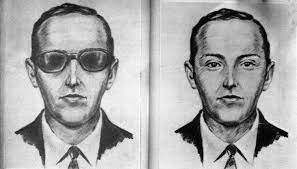The Mysterious Vanishing of D.B. Cooper
- John Darren

- May 25, 2023
- 3 min read
On a winter day, November 24, 1971, a man introducing himself as Daniel Cooper purchased a modest $20 one-way ticket on Northwest Airlines Flight 305. The flight was scheduled to fly from Portland, Oregon to Seattle, Washington. Witnesses described Cooper as a middle-aged man donned in a business suit, an overcoat, and brown shoes, accessorizing with a white shirt, black tie, a briefcase, and a brown paper bag.
Prior to take-off, Cooper ordered a bourbon and soda. As the plane ascended, he passed a note to the flight attendant, who initially dismissed it, only to be warned by Cooper, “Miss, you better look at that note. I have a bomb.” He went on to reveal a briefcase harboring red sticks entangled with wires, mimicking a bomb.
Cooper calmly dictated his demands to the flight attendant, requesting her to relay them to the Captain. He demanded $200,000, explicitly in $20 bills, to be ready by 5 p.m., four parachutes, and a fuel truck standing by on their landing. The FBI managed to assemble the ransom from local banks in Seattle, and the Seattle police acquired parachutes from a nearby skydiving school.
Upon receipt of his requests, Cooper allowed all passengers and a few crew members to disembark. He then instructed the crew to refuel and set a course for Mexico City, with an altitude below 10,000 feet. Iconically, he donned a pair of dark sunglasses, which eventually became a significant detail in the case's visual descriptions.
At a point between Seattle and Reno, Nevada, a little after 8 p.m., Cooper daringly leapt from the rear door of the plane with the money and two parachutes. He disappeared into the abyss, never to be seen again.
Despite an extensive manhunt spanning over four decades, no solid leads have surfaced regarding Cooper's identity or what transpired after his daring leap. The elusive mystery of D.B. Cooper continues to be one of the most captivating unsolved cases in the annals of the FBI and US history.
In the aftermath of the hijacking, the FBI diligently circulated lists of the ransom serial numbers to financial institutions, casinos, law enforcement agencies, and various businesses involved in significant cash transactions. Northwest Orient Airlines offered a reward of up to $25,000 or 15% of the recovered money. In 1972, U.S. Attorney General John N. Mitchell made the serial numbers available to the general public. Exploiting the situation, two individuals swindled $30,000 from a Newsweek reporter by using counterfeit bills with Cooper's serial numbers.
Despite extensive efforts, the ransom money remained elusive. The Oregon Journal and the Post-Intelligencer made reward offers for the recovery of ransom bills, but no genuine bills were turned in. In 1975, Northwest Orient's insurer paid the airline's $180,000 claim on the ransom money, complying with a court order from the Minnesota Supreme Court.
Subsequent investigations revealed inaccuracies in the original landing zone estimation. Captain Scott, who flew the plane manually during the hijacking, determined that the flight path was farther east than initially believed. Further data, including input from Continental Airlines pilot Tom Bohan, indicated errors in wind direction calculations for the drop-zone, possibly by as much as 80 degrees. This led to speculation that the actual drop zone was south-southeast of the original estimate, specifically in the Washougal River drainage area.
Despite extensive searches in the Washougal Valley and surrounding regions, no significant findings related to the hijacking have been reported. Some theories suggest that the 1980 eruption of Mount St. Helens might have obliterated any remaining physical clues. In 2016, the FBI announced the suspension of active investigation into the Cooper case, redirecting resources to higher-priority issues. However, local field offices continue to accept any legitimate physical evidence regarding the parachutes or ransom money.
This enigmatic crime remains the only unsolved case of air piracy in commercial aviation history. The 66-volume case file compiled over 45 years is preserved for historical purposes at FBI headquarters, and the evidence is accessible to the public. The mystery of D.B. Cooper endures, captivating the imagination of investigators and the public alike.













